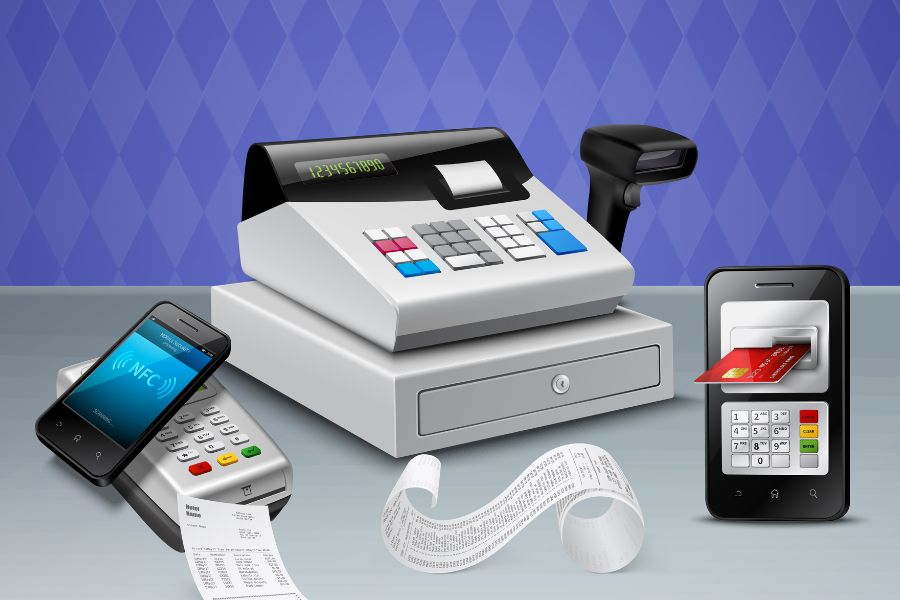As we head into 2025, the ecommerce landscape is rapidly evolving due to emerging technologies, shifting consumer behaviors, and innovative business strategies. To remain competitive in this dynamic market, businesses need to grasp the latest ecommerce trends. This article will examine the key trends that will shape the online business environment in 2025, providing insights into the future of digital commerce.
Highlight:
- Key trends shaping 2025 include voice commerce, AR/VR for immersive shopping, sustainability, social commerce, and subscription-based models.
- To stay competitive, businesses should prioritize personalization, adopt innovative technologies, and embrace eco-friendly practices while optimizing logistics and global expansion strategies.
Global Ecommerce Market: A Look Ahead
The ecommerce sector is on an upward trajectory, with global revenues expected to surpass $7 trillion by 2027. This explosive growth stems from increased smartphone adoption, faster internet connectivity, and a cultural shift toward online shopping.
China stands out as a leader, contributing nearly half of global eCommerce revenue, followed by the U.S. and several emerging markets. Fashion, electronics, and groceries remain dominant sectors, while mobile commerce drives much of the industry’s momentum. The pandemic’s digital push further accelerated this trend, bringing more shoppers online and reshaping their buying habits.
The future will see innovations in digital payments, AI, and logistics shaping eCommerce. With consumer trust in online platforms at an all-time high, businesses are now adapting to meet rising expectations.
10 Ecommerce Trends 2025 That Will Define The Online Business Landscape
The ecommerce landscape is rapidly evolving, driven by technological advancements, changing consumer behaviors, and new business strategies. In 2025, several key trends will redefine the industry.
Rise of Artificial Intelligence (AI) in Ecommerce
AI continues to transform ecommerce by boosting both operational efficiency and customer satisfaction. AI-driven tools like chatbots, personalized recommendations, and predictive analytics help businesses craft tailored shopping experiences.
Major players such as Amazon and Shopify are leveraging AI to improve customer service, manage inventory, and refine pricing strategies. According to PwC, 49% of customer interactions will be automated by AI by 2025, signaling a shift toward intelligent customer engagement.
Voice Commerce and Its Impact on Online Shopping
Voice search technology is carving out its place in eCommerce, enabling hands-free shopping experiences. Virtual assistants like Alexa and Google Assistant allow users to browse products, place orders, and track shipments with simple voice commands.
This trend offers brands a chance to innovate and streamline customer interactions. Optimizing for conversational keywords will be crucial to improving visibility in the voice search era.
Augmented Reality (AR) and Virtual Reality (VR) for Product Visualization
AR and VR are redefining online shopping, offering consumers a way to “experience” products before buying. From trying on clothes virtually to visualizing furniture in a living room, these technologies help reduce buyer hesitation and build confidence.
Brands like IKEA and Sephora are leading the way, integrating AR features into their apps for a more interactive experience. In 2025, expect AR and VR to become standard for brands aiming to stand out.
Hyper-Personalization Through Data and AI
In 2025, businesses will increasingly rely on data and AI for hyper-personalization. By analyzing customer behavior, preferences, and past purchase data, companies can offer tailored shopping experiences that boost engagement and conversions.
POS systems like ConnectPOS integrates with ecommerce platforms smoothly to provide real-time insights, enhancing customer engagement through tailored experiences. Features like purchase history tracking, inventory management, and flexible payment methods empower businesses to forge deeper connections with their audience.
Sustainability and Ethical Consumerism
Sustainability continues to be a growing concern among consumers, and this ecommerce trend will only intensify in 2025. Eco-conscious shoppers are demanding more transparency about the environmental impact of the products they buy. Brands that prioritize sustainable sourcing, packaging, and carbon-neutral operations will gain favor among consumers.
The rise of ethical consumerism is already reshaping industries, with companies like Patagonia leading the charge with their commitment to sustainability.
Integration of Social Media and Ecommerce
The lines between social media and eCommerce are blurring as platforms like Instagram, TikTok, and Facebook continue to merge entertainment with shopping. In 2025, these integrations will deepen, making purchases from shoppable posts, live-streaming events, and influencer promotions seamless.
Social commerce allows brands to engage audiences where they spend the most time—scrolling feeds and watching videos. With features like in-app checkout and dynamic ads, companies can target customers with pinpoint accuracy, building brand loyalty while driving sales in a space that feels interactive and personal.
Subscription-Based Models in Ecommerce
Subscription models are rapidly becoming a cornerstone of eCommerce, transforming how businesses build relationships with their customers. Offering regular deliveries of curated products, these models foster loyalty while providing a predictable revenue stream.
Success stories like Netflix, Amazon Prime, and Dollar Shave Club demonstrate the potential of this approach. As the demand for personalized convenience grows, industries from fashion to pet care are jumping on board. In 2025, we expect subscriptions will extend far beyond niche markets, reshaping consumer expectations around value and accessibility.
Digital Payments and Cryptocurrencies in Ecommerce
The way consumers pay for goods is changing, with digital wallets and cryptocurrencies gaining popularity. Payment options like Apple Pay, Google Pay, and PayPal are becoming standard, while cryptocurrencies like Bitcoin are slowly being integrated into online stores. As the financial landscape evolves, ecommerce businesses must adapt by offering multiple payment methods to meet customer preferences.
With the growing demand for fast, secure, and anonymous transactions, cryptocurrency could become a more mainstream payment option by 2025.
Logistics and Supply Chain Innovations
Rapid advancements in logistics are shaping the future of eCommerce. The integration of drones, robotics, and autonomous vehicles promises faster delivery times and lower operational costs. Amazon, for example, has pioneered drone deliveries, and other companies are following suit with smart warehouses and AI-powered inventory systems.
These innovations go beyond improving speed, they also enable businesses to handle growing demand efficiently. As customer expectations for instant gratification rise, supply chain optimization will become a cornerstone of competitive eCommerce strategies.
Data-Driven Insights and Predictive Analytics
Data is transforming eCommerce into a science. Predictive analytics, powered by customer data, allows businesses to anticipate buying trends, fine-tune inventory, and tailor promotions to individual preferences.
This approach fosters deeper customer relationships by offering personalized recommendations and well-timed reminders. For companies looking to stay ahead in 2025, mastering the art of data-driven decisions will be the key to delivering exceptional shopping experiences while achieving operational excellence.
How to Prepare for the Ecommerce in 2025?
As 2025 approaches, the eCommerce landscape is rapidly evolving, presenting both challenges and opportunities for brands. To stay competitive, consider focusing on the following key areas:
- Personalization: Utilize artificial intelligence (AI) and machine learning to offer personalized product recommendations, targeted email campaigns, and dynamic website content. Tailoring experiences to individual customers enhances satisfaction and loyalty.
- Omnichannel Experience: Develop a seamless shopping experience across online and offline channels. Integrate inventory systems, offer flexible options like Buy Online, Pick Up In Store (BOPIS), and maintain consistent branding to meet consumer expectations.
- Sustainability: Adopt eco-friendly practices, such as sustainable packaging and responsible sourcing, to appeal to environmentally conscious consumers. Implementing recycling or upcycling programs can further strengthen brand loyalty.
- Artificial Intelligence: Implement AI solutions for customer support, inventory management, and analytics. AI-driven tools can optimize operations, predict trends, and enhance personalized marketing efforts.
- Cross-Border Commerce: Expand into international markets by researching demand, optimizing websites for global audiences, and partnering with logistics providers to streamline shipping processes.
FAQs: Ecommerce Trends in 2025
- What role will voice commerce play in the future of ecommerce?
Voice commerce will enhance convenience, enabling hands-free shopping and personalized recommendations through smart assistants like Alexa and Google Assistant.
- How important is personalization in ecommerce growth?
Personalization drives customer engagement, loyalty, and higher sales by delivering tailored shopping experiences based on individual preferences and behaviors.
- What are the key benefits of integrating AR and VR into ecommerce?
AR and VR offer immersive experiences, allowing customers to visualize products, enhance engagement, and reduce return rates by improving purchase confidence.
Conclusion
In sum, as the ecommerce trends in 2025, embracing new technologies, sustainability, and personalization will be key to staying competitive. Let’s leverage AI, AR/VR, and voice commerce, so businesses can create engaging and efficient customer experiences. Innovations in logistics, digital payments, and cross-border commerce will further drive growth, while data-driven insights ensure strategic decision-making. To thrive in this dynamic environment, adaptability and innovation are essential.
Ready to future-proof your ecommerce business? ConnectPOS offers cutting-edge solutions to enhance your online store. Contact us today!



